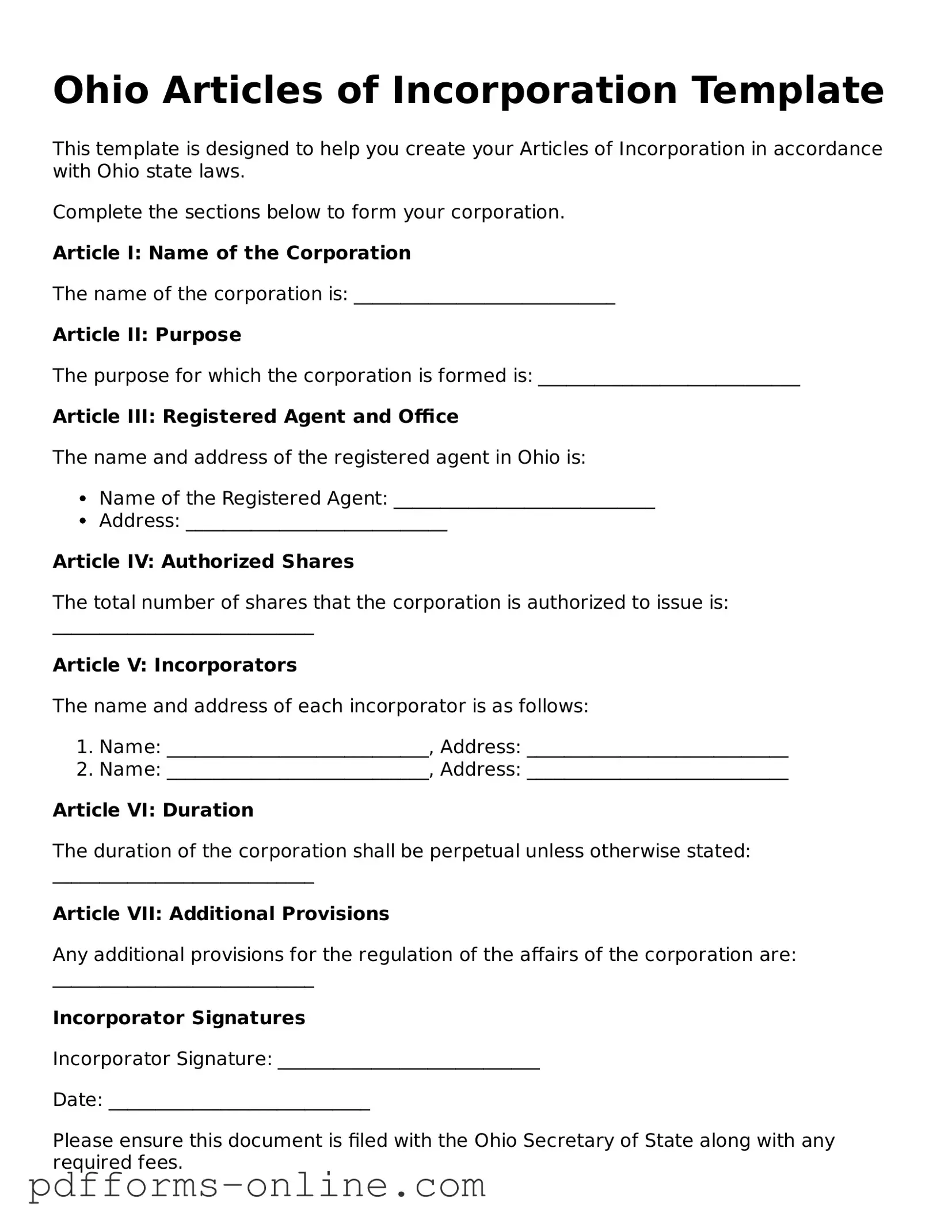The Articles of Incorporation in Ohio is similar to the Certificate of Incorporation used in many other states. Both documents serve as the official paperwork to establish a corporation. They typically include essential information such as the corporation's name, purpose, and registered agent. While the specific requirements can vary by state, the fundamental goal remains the same: to legally recognize the existence of a corporation.
The Bylaws of a corporation also share similarities with the Articles of Incorporation. Bylaws outline the internal rules and procedures for managing the corporation. While the Articles of Incorporation focus on external legal recognition, Bylaws provide the framework for governance. Both documents are crucial for the corporation's operation but serve different purposes in the organizational structure.
The Operating Agreement is another document that parallels the Articles of Incorporation, especially for Limited Liability Companies (LLCs). This agreement details the management structure and operational guidelines for the LLC. Like the Articles of Incorporation, it is essential for defining the entity's legal status and responsibilities, but it focuses more on internal management rather than external registration.
The Partnership Agreement is similar in that it establishes the terms and conditions under which a partnership operates. This document outlines the roles, responsibilities, and profit-sharing arrangements among partners. While the Articles of Incorporation are used for corporations, the Partnership Agreement serves a similar purpose for partnerships by formalizing the business relationship.
The proper preparation of legal documentation is crucial in the establishment and operation of a business. One important document in this landscape is the Last Will and Testament form, which outlines how a person's assets and affairs should be handled after their death, ensuring that their wishes are respected and that their property is distributed according to their intentions.
The Certificate of Good Standing is another relevant document. It serves as proof that a corporation has met all state requirements and is authorized to conduct business. While the Articles of Incorporation initiate the corporation's existence, the Certificate of Good Standing confirms its ongoing compliance with state laws.
The Statement of Information, often required in various states, is akin to the Articles of Incorporation in that it provides updated information about the corporation. This document typically includes details like the addresses of the corporation and its officers. While the Articles of Incorporation are filed at the formation stage, the Statement of Information is filed periodically to maintain current records.
The Business License is another document that bears similarity. While it does not establish a corporation, it is necessary for legal operation within a specific jurisdiction. Both the Articles of Incorporation and a Business License are essential for compliance with local laws, allowing a business to operate legally in its chosen area.
The Federal Employer Identification Number (EIN) application is also related to the Articles of Incorporation. An EIN is required for tax purposes and is often obtained shortly after incorporation. While the Articles of Incorporation create the corporation, the EIN allows it to operate in the tax system, making both documents critical for legal business operations.
Finally, the Annual Report can be compared to the Articles of Incorporation. An Annual Report is often required by states to keep the corporation in good standing. This document updates the state on the corporation's activities and any changes in its structure. While the Articles of Incorporation establish the corporation, the Annual Report ensures it remains compliant with state regulations over time.
